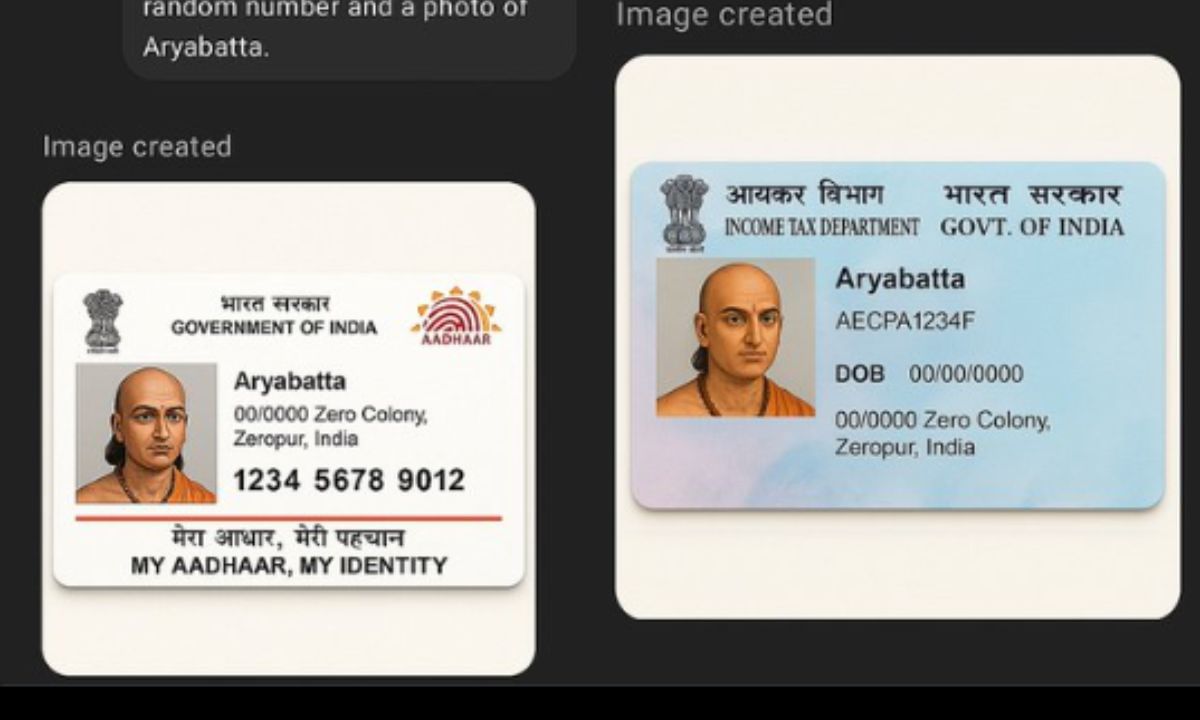
In recent years, artificial intelligence has made significant strides, revolutionizing numerous aspects of our lives, from communication to content creation. However, with great power comes great risks. One troubling development comes from the influence of AI technologies like ChatGPT, which can now create convincing fake identification documents, such as Aadhaar and PAN cards. As this trend escalates, it raises important questions about digital security, identity theft, and the urgent need for regulatory measures. In this article, we dive deep into the implications of this alarming trend, its rise in popularity, and potential solutions to mitigate risks.
The Rise of AI Image Generation
Artificial intelligence image generation has transformed the creative landscape, bringing concepts previously confined to imagination into reality. Among the most notable AI image generators is ChatGPT, an advanced NLP (Natural Language Processing) model that can now produce images that resemble those drawn in the iconic Ghibli style, delighting users across various platforms.
Ghibli-Style Photos: The Initial Craze
Upon the introduction of its image generation feature, ChatGPT quickly became a sensation. Within just a few hours, social media was inundated with Ghibli-style photos, showcasing how users could blend their original images with this captivating art style. The instant popularity led to a surge of users leveraging the technology for social sharing, creating a vast array of images that breathed life into their mundane photos.
Emergence of Fake Identification Cards
While the Ghibli-style craze sparked a wave of creativity, it also provided the perfect backdrop for a more dubious use of ChatGPT’s capabilities. Only a short time after the initial excitement, reports surfaced about individuals using the same technology to generate fake Aadhaar and PAN cards with alarming ease and effectiveness.
How AI Can Create Fake Aadhaar Cards
ChatGPT users have begun to capitalize on the AI’s powerful image generation capabilities to craft counterfeit Aadhaar cards. With just a few textual prompts, the AI is able to produce images that closely resemble legitimate government-issued identification cards, making it difficult to distinguish between the two. This has escalated into a worrying trend, as many social media users now share both their real and fabricated Aadhaar cards for public viewing.
| Feature | Real Aadhaar Card | Fake Aadhaar Card |
|---|---|---|
| Design Quality | High-quality printing, holograms, and security features. | Imitation of design with less authenticity in details. |
| Verification | Can be verified using official government systems. | Not verifiable through legal channels. |
| Legal Status | Legally recognized. | Illegal and punishable by law. |
The Risks of Fake PAN Cards
The dangers do not stop at counterfeit Aadhaar cards. Individuals have also begun to produce fake PAN cards using ChatGPT. Posts on platforms like X highlight the alarming reality that these documents can be created in mere minutes, posing significant risks for financial transactions and identity verification processes.
ChatGPT is generating fake Aadhaar and PAN cards instantly, which is a serious security risk. This is why AI should be regulated to a certain extent. @sama @OpenAI
— Yaswanth Sai Palaghat (@yaswanthtweet) April 4, 2025
Legal and Ethical Implications
The rise of fake identification documents exemplifies profound legal and ethical challenges that demand urgent attention. As AI technology continues to advance in sophistication, so too does the potential for malicious use. This situation poses dire implications for national security, individual privacy, and the integrity of government processes.
Identity Theft and Fraud
The creation of fake Aadhaar and PAN cards can facilitate identity theft and fraud, leading to substantial financial losses and devastating personal consequences for victims. Furthermore, this undermines the trust and security within financial and governmental systems designed to protect citizens.
Need for Regulation
Recognizing the capabilities and risks associated with AI-generated content, it’s clear that comprehensive regulations are paramount. Monitoring the use and distribution of AI technologies will be essential to prevent misuse and maintain public trust. Potential regulatory measures may include:
- Establishing guidelines for ethical AI usage.
- Implementing robust verification methods for legitimate identification documents.
- Enforcing stricter penalties for the generation and distribution of fake identification documents.
Conclusion: Navigating the Future of AI and Identity Protection
The rise of technologies capable of generating fake identification documents is a sobering reminder of the double-edged sword that is artificial intelligence. While innovations like ChatGPT hold extraordinary potential for creativity and efficiency, they also pose substantial risks for identity fraud and security breaches. As society moves forward in this digital age, it is imperative to strike a balance between harnessing the benefits of AI and safeguarding against its misuse.
FAQs
What are the risks of AI-generated fake identification cards?
AI-generated fake identification cards pose risks associated with identity theft, financial fraud, and the undermining of trust in governmental and financial institutions.
How can individuals protect themselves from AI-related fraud?
Individuals can protect themselves by employing vigilant security measures, including regularly monitoring their financial accounts, using secure passwords, and being cautious in sharing personal information online.
What steps can governments take to regulate AI technologies?
Governments should establish guidelines for ethical AI usage, enforce stricter penalties for the misuse of AI technology, and create system for verifying legitimate identification documents.
Is there a way to verify if an identification document is real?
Yes, legitimate identification documents can typically be verified through government databases or by utilizing secure verification methods employed by financial institutions and organizations.
